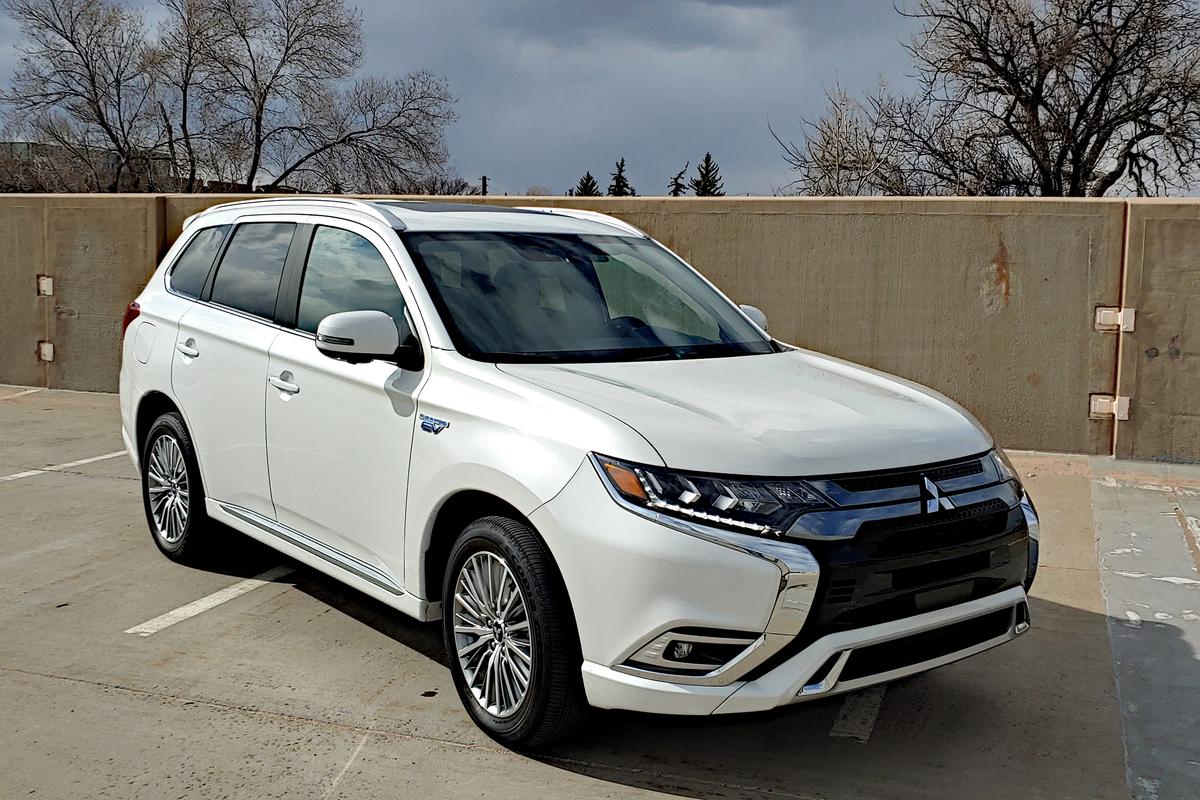The current-generation Mitsubishi Outlander was introduced in 2014 and a plug-in hybrid model (PHEV) arrived shortly thereafter. The PHEV combines the best of both worlds, offering the experience of all-electric driving with the assurance of longer range via a gasoline engine. We jumped behind the wheel to put it through its paces.
The Mitsubishi Outlander, in its standard gasoline format, is one of the often overlooked gems of the automotive market. It’s cheap, it’s got a huge warranty, and it has all of the basics needed for a growing family to, well, grow. It also misses a lot of marks, but that has always been compensated for with its lowball price tag.
With the plug-in hybrid model, however, the Outlander PHEV fattens up its price point. The rest of the vehicle should follow suit if it is to compete. Mitsubishi seems to understand this concept and made moves to bolster the salability of the PHEV model. It has a better interior, more modern-looking controls, and a more sophisticated paint palette. The 2020 Outlander PHEV has a generous list of standard features, including advanced safety tech, and every Mitsubishi we’ve driven uses one of the most advanced all-wheel drive systems we’ve seen. We touted the gasoline model Outlander’s excellent AWD capabilities and mirror that praise with this plug-in model.
That’s about where it ends, though. The low-rent qualities of the standard model, which are forgiven there because of its segment-bottom price point, seep through the veneer of the higher-cost PHEV model. Rattles, road noise, odd creaks, and occasional mirror whistles are the norm in this rig. This is further enhanced by a vague, disconnected drive feel. Finally, there is no third row option for the Outlander PHEV, which limits its versatility for the standard Outlander’s primary audience.

The 2020 Mitsubishi Outlander PHEV comes in two trim levels: the SEL and the GT. We drove the latter, which adds some interior flair and a little bit of sportiness to the Outlander’s appearance via some extra body kit. Whatever the trim level, though, the powerplant is the same in the Outlander PHEV.
That starts with a 2.0-liter four-cylinder engine tuned specifically for efficiency (think Atkinson cycle). This provides 117 horsepower (87.2 kW). This is further augmented by two 80.4 horsepower (60 kW) electric motors; one to each axle. Total system output, after losses and such, is 190 horses (141.6 kW). A continuously variable transmission (CVT) manages the powertrain and a 12 kWh battery pack offers power to the motors. Total all-electric range is about 22 miles (35.4 km) per charge, depending on driving conditions, and EV mode allows driving at up to highway speeds without switching on the engine.
For the most part, driving the Outlander PHEV is similar to driving the standard gas model. The interior, however, is much more space age in design by comparison. The use of whites and blue-colored lighting and the like add a futuristic element to the PHEV model’s interior design, reminding one that this is a non-standard vehicle. Controls and instrument readouts are also plug-in specific, with highlights to battery power availability, usage, range estimations, and so forth.
More detailed information is available through the 8-inch touchscreen (standard). The infotainment also supports Apple CarPlay and Android Auto along with Bluetooth. Three USB ports are also standard, but the six-speaker audio system trends towards tinny rather than robust. Voice controls in the Outlander PHEV are hit-and-miss most of the time and menus are tedious. Using one of the phone-controlled apps is preferred.

The point of a plug-in is improved fuel economy. The 2020 Mitsubishi Outlander PHEV certainly delivers pretty good returns on that front. If it’s being regularly plugged in, that is. The US Environmental Protection Agency (EPA) rates the Outlander PHEV at 74 MPGe combined (about 3.18 l/100km). With no good way to measure that in the real-world, however, we stuck with standard MPG returns over a week’s worth of daily driving and nightly plugins. Our returns were about 38 mpg (6.19 l/100km) overall. Better than the gas-only MPG rating of 25 (highway), but nowhere near the EPA’s estimate. The likely reasons are in the test methods: we drove normally and put on more than half the mileage at highway speeds. We routinely ran the battery to near-zero every day as well. Suffice it to say: your results may vary.
At a price tag of nearly US$44,000 for our GT Premium model Outlander PHEV, it’s difficult to find justification for the money being spent. The 2020 Mitsubishi Outlander PHEV does have upsides and good points. All of which may match someone’s particular needs. The Outlander PHEV has a starting price of $36,295 plus shipping.
Product Page: 2020 Mitsubishi Outlander PHEV














